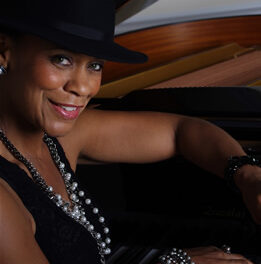Edenton Street United Methodist Church believes that a church’s “strong music and arts program … ministers to our congregation, and strengthens the entire Raleigh community.” This church put that belief into practice as its Fine Arts Series featured the Triangle Brass Band in the grand old sanctuary. The program, “Evocations for Brass,” complemented an especially balmy late spring Saturday evening.
Artistic Director Tony Granados opened with the first movement from “Sinfonietta – At the Edge of Time” by the venerable British brass composer Ray Steadman-Allen. This energetic piece evoked memories of real barn-burner LP recordings from long ago, used to demonstrate the superior sonic qualities of competing “hi-fi” systems.
But the actual namesake, “evocations,” came second on the program. Appropriately named Evocations, this major feature of the evening was a large four-part work by Martin Ellerby. The prominent British composer was present, offering a brief explanation of the Spanish-themed suite. The ebullient “Harlequin’s Carnival” took its inspiration and name from the mildly surreal painting by the Spanish artist Miró (1893-1983). Of like vigorous character was the ending “The Royal Hunt of the Sun,” featuring a crowd-pleasing interlude wherein the percussionists were granted full rein. In both pieces the audience was never far from Pamplona and the running bulls. “The Death of Don Quixote” was alternately dolorous and celebratory, befitting the tragic hero of the ancient and monumental novel by Cervantes (1547-1616). Rounding out the suite was “Sueño” (Dream), a brief reverie of sorts in contrast to the other three. Ellerby had every reason to be abundantly pleased with the enthusiastic work of these players.
The secular having been dispensed with, it was time for the forces to launch into the ecclesiastical. This they did with the James Hile arrangement of Tschesnokoff’s famous “Salvation is Created” from 1917. It is quite likely that many in the audience perforce sang along sotto voce with the familiar and compelling text.
James Curnow was a major contributor to the evening with three works. The lively Psalm 100 and the Fanfare Prelude on Lobe den Herren bookended the intermission. The latter called out with “All ye who hear, now to His temple draw near.” Curnow also arranged what possibly is the best known tune in all Christendom, “Nicaea,” or more familiarly, “Holy, Holy, Holy.” The spiritual mood was further boosted with “God So Loved the World” from The Crucifixion, Stainer’s famous masterpiece.
It was back to secular mode for the final two numbers. English composer Gordon Langford has created a surprisingly animated arrangement of Arthur Sullivan’s subdued “The Lost Chord.” And Philip Wilby has lent his talents to a band arrangement of Symphony No. 3 by Saint-Saëns. That final movement of this “Organ Symphony” was at once both exhilarating and frustrating. The band maintained the power of the original, but the hearer kept expecting the great organ strains to enter the mix. (The program was to be repeated the next afternoon at Saint Michael’s Episcopal Church. There the work was scheduled to be supplemented by the church’s own choirmaster/organist Kevin Kerstetter.
Edenton Street and Saint Michael’s deserve congratulations for including the fine arts promotion as an important part of their outreach ministry. And the Triangle Brass Band has proved to be a worthy colleague in such endeavors.


![<p>Reconsidering [the Vast Majority of] Robert Schumann’s Songs</p>](https://cvnc.org/wp-content/themes/Extra/images/post-format-thumb-text.svg)








